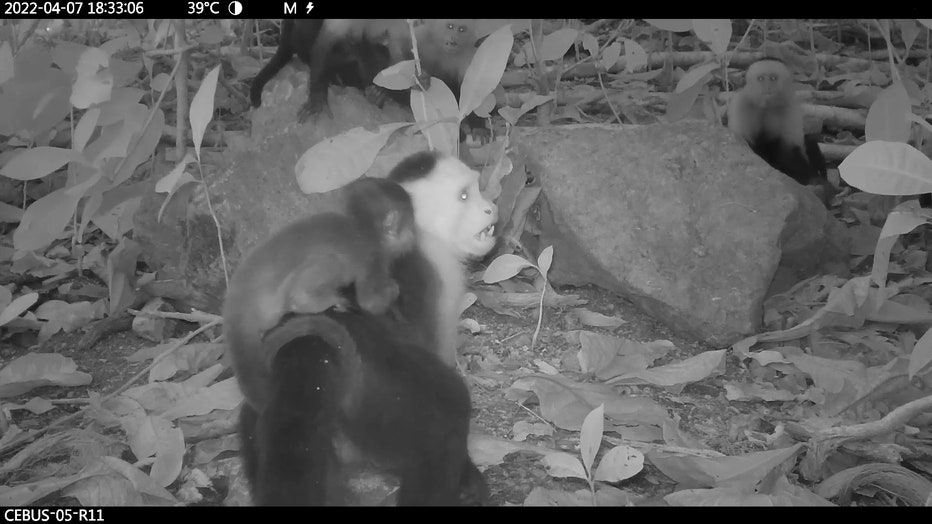Video: Monkeys caught kidnapping baby monkeys of a different species

Scientists baffled by monkey kidnappings
Capuchins, a house cat-sized monkey found in South America and Central America, were caught on video kidnapping baby howler monkeys - a different species. Scientists are still trying to figure out why.
Scientists have found surprising video evidence of what they call monkey kidnappings – and they’re trying to figure out why.
Video footage from a small island of Panama between 2022 and 2023 shows capuchin monkeys carrying at least 11 howler babies, a different species. In the videos, the baby howler monkeys cling to the back of the male capuchin monkeys.
Why did capuchin monkeys kidnap other monkeys?
What we know:
Researchers at Max Planck and the Smithsonian Tropical Research Institute had set up more than 80 cameras to study capuchin tool use, and that’s how they saw the first howler babies appear in early 2022.
RELATED: Video shows alligator eating baby gator in Florida's Everglades
Capuchins are house cat-size monkeys found in South America and Central America. They are long-lived, clever and learn new behaviors from each other. One group of capuchins in Panama has even learned to use stone tools to crack open nuts and seafood.

Screen shot from a video showing male capuchin monkeys kidnapping baby monkeys of a different species (Brendan Barrett / Max Planck Institute of Animal Behavior via Storyful)
The footage showed the capuchins walking and pounding their stone tools with baby howlers on their backs. There were no signs of deliberate aggression toward the babies and they weren’t eaten, ruling out predation.
In most or all cases, the baby howlers died, researchers said. Infant howler monkeys would normally be carried by their mothers while still nursing. All the babies in the video – from a few weeks to a few months in age – were too young to be weaned.
What we don't know:
Scientists still don’t know why the capuchin monkeys kidnapped the baby howlers. Cameras did not capture the moments of abduction, which scientists said likely happened up in the trees where howlers spend most of their time.
RELATED: Dozens of rattlesnakes emerge in Colorado ‘mega den’ livestream
One theory is that the first baby-snatcher may have had a confused "caring motivation," or parental instinct, because he showed gentleness interacting with the infants. Then four other males copied his actions.
The researchers said they don't believe the capuchins harmed the babies on purpose. So far, only one group of capuchins has been known to kidnap.
What they're saying:
"This was very much a shocking finding," said Zoë Goldsborough, a behavioral ecologist at the Max Planck Institute of Animal Behavior in Germany. "We’ve not seen anything like this in the animal kingdom."
"We’ve all spent hours wracking our brains why they would do this," said Goldsborough.
Dig deeper:
The videos recorded a few instances of young capuchin males still carrying howler babies that had died, likely from starvation. Many animals – from gorillas to orcas – have been observed carrying their own dead offspring, though scientists aren’t sure why they do it.
The Source: This report includes information from The Associated Press.

